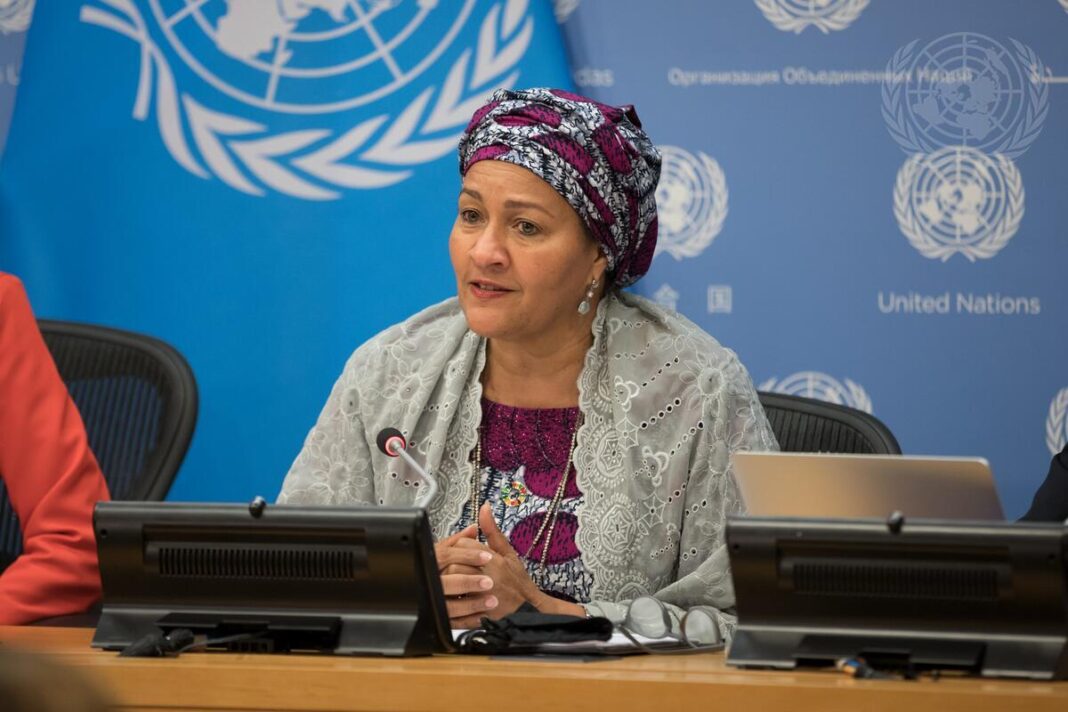NEW YORK: With an estimated 64.3 percent of children globally unable to read and understand simple text, the UN’s Deputy Secretary-General Amina Mohammed warned journalists that “in a few years two out of three people wont be able to read your stories.”
The warning came during a UN press briefing on Thursday regarding the upcoming Transforming Education Summit with Special Advisor to the Secretary-General on TES Leonardo Garnier, and UNESCO’s Assistant Director-General for Education Stefania Giannini.
“If this is not called a crisis, frankly, we don’t know what it is,” she said, adding that “the crisis in education does go much deeper, beyond issues of access and inequality, education systems are being tested like never before.”
Today, 222 million young people living in regions affected by wars and disasters — in Africa, Asia, the Middle East, and South America — are without access to uninterrupted or quality education.
According to analysis by Education Cannot Wait, the UN global fund for education in emergencies and protracted crises, 78.2 million of these crisis-impacted children are out of school and 119.6 million are not achieving minimum-competency levels in reading and mathematics despite attending school.
“This consultation demonstrates a massive awareness that transformation is not a choice,” Giannini stressed, “It’s an imperative.”
With the TES, the UN is aiming to redesign “outdated structures that have lead to wars, economic devastations,” according to Mohammed.
Garnier stressed the economic benefits of investing in education, which has notoriously taken a backseat in terms of funding priorities.
“Nothing has higher returns than investing in education. So what we’re trying to do is to reframe this discussion,” he said.
“This is why the summit is first and foremost a political summit, integrating the demands from the youth, the commitments of all stakeholders, national and international and especially the commitments of all national and old world leaders,” Garnier explained.
The summit, which kicks off on Friday, is split into three distinct days. The Mobilization Day (Sept. 16), the Solutions Day (Sept. 17) and the Leaders Day (Sept. 19).
According to the summit website, the Mobilization Day will be youth-led and youth-organized and will serve to convey the collective recommendations of youth on transforming education to decision and policymakers, informed by the Summit Youth Declaration.
The Solutions Day will provide a platform for partners, including UN agencies, NGOs, civil society organizations and private sector partners, to mobilize collective support to launch or scale up initiatives connected to the five Thematic Action Tracks.
These five tracks include the following: Inclusive, equitable, safe and healthy schools; Learning and skills for life, work and sustainable development; Teachers, teaching and the teaching profession; Digital learning and transformation; and Financing of education.
During the Leaders Day, a limited number of thematic sessions will be held to place a focus on cross-cutting priorities for transforming education.
“I think a lot of the learning that we have from this is to make sure we take cognizance of what the reality is in trying to help those children come back into education, and come back in a way that will be meaningful,” Mohammed said.
“And that will be transformational in in meeting with the world of tomorrow, today.”




